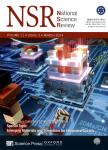Progress in ENSO prediction and predictability study
Progress in ENSO prediction and predictability study作者机构:State Key Laboratory of Satellite Ocean Environment DynamicsSecond Institute of Oceanography Environmental Science and EngineeringUniversity of Northern British Columbia Prince George Key Laboratory of Ocean Circulation and WavesInstitute of OceanologyChinese Academy of Sciences Qingdao National Laboratory for Marine Science and Technology State Key Laboratory of Numerical Modeling for Atmospheric Sciences and Geophysical Fluid Dynamics Institute of Atmospheric PhysicsChinese Academy of Sciences College of Oceanography Hohai University International Center for Climate and Environment Science Institute of Atmospheric PhysicsChinese Academy of Sciences Laboratory for Climate Studies & CMA—NJU Joint Laboratory for Climate Prediction StudiesNational Climate CenterChina Meteorological Administration College of Atmospheric and Oceanic ScienceFudan University
出 版 物:《National Science Review》 (国家科学评论(英文版))
年 卷 期:2018年第5卷第6期
页 面:826-839页
核心收录:
学科分类:07[理学] 070601[理学-气象学] 0706[理学-大气科学]
基 金:supported by grants from the National Natural Science Foundation of China(41690124,41690121,41690120,41705049,41621064,41530961) the National Key Research and Development Program(2017YFA0604202) the National Programe on Global Change and Air-Sea Interaction(GASI-IPOVAI-06) the Scientific Research Fund of the Second Institute of Oceanography(JG1810)
主 题:ENSO prediction and predictability coupled model ensemble prediction optimal error growth probabilistic prediction
摘 要:ENSO is the strongest interannual signal in the global climate system with worldwide climatic, ecological and societal impacts. Over the past decades, the research about ENSO prediction and predictability has attracted broad attention. With the development of coupled models, the improvement in initialization schemes and the progress in theoretical studies, ENSO has become the most predictable climate mode at the time scales from months to seasons. This paper reviews in detail the progress in ENSO predictions and predictability studies achieved in recent years. An emphasis is placed on two fundamental issues: the improvement in practical prediction skills and progress in the theoretical study of the intrinsic predictability limit. The former includes progress in the couple models, data assimilations, ensemble predictions and so on, and the latter focuses on efforts in the study of the optimal error growth and in the estimate of the intrinsic predictability limit.



